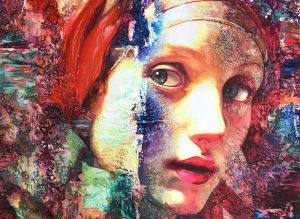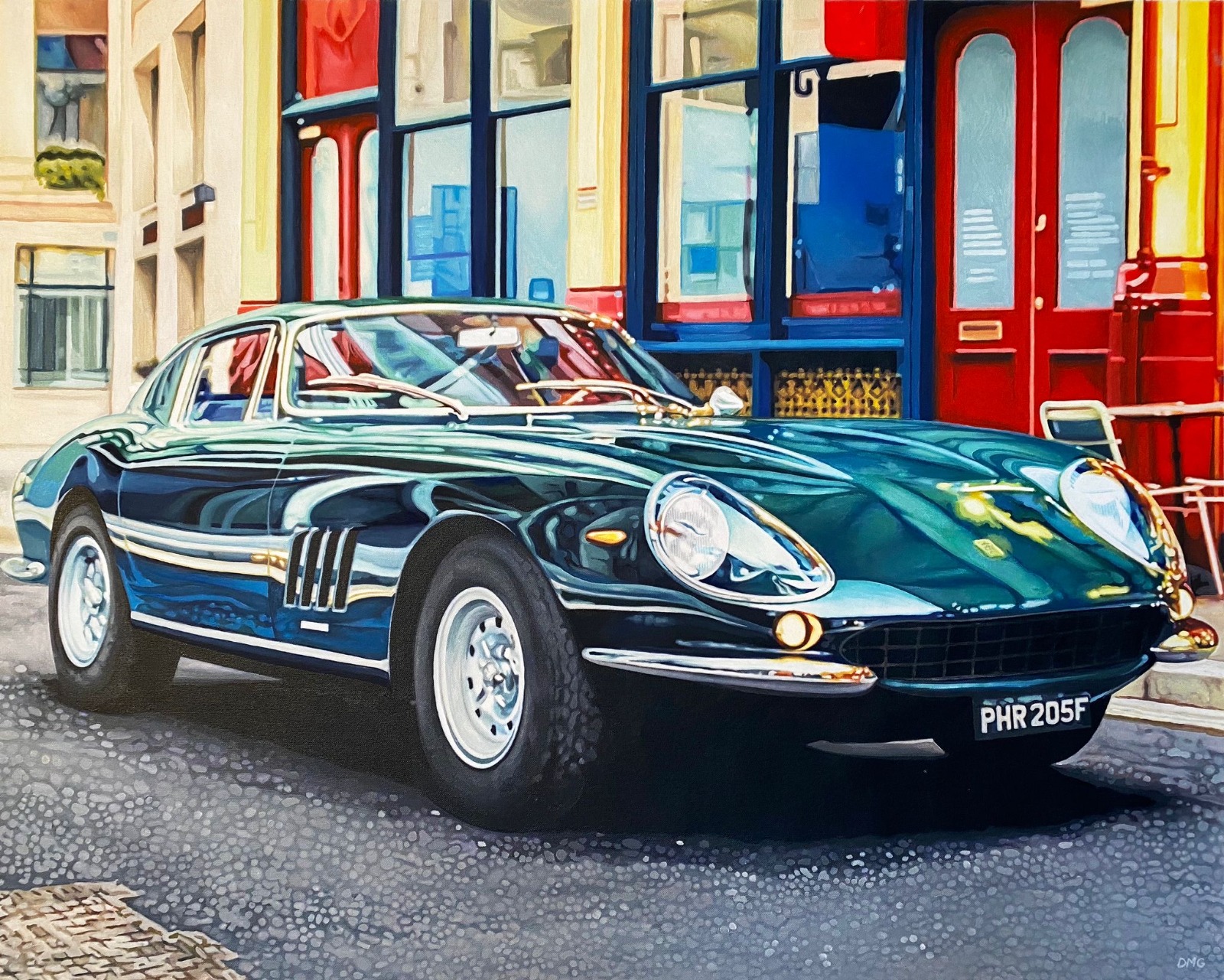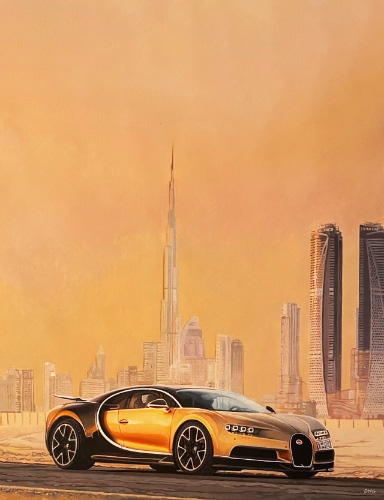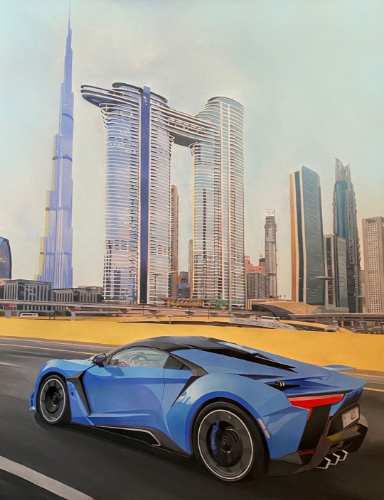

Hyperrealism is one of the most captivating artistic languages of our time. At first glance, a hyperrealistic painting can be mistaken for a photograph. But unlike photography, it is not a mechanical reproduction: it is the artist’s interpretation of reality, amplified by detail, emotion, and atmosphere.
In a world dominated by digital images, hyperrealism offers something unique: the ability to slow down and observe, to rediscover the beauty of light, reflections, textures, and human expression. This is why hyperrealistic artworks have become highly sought after by collectors and art enthusiasts worldwide.
Hyperrealism evolved from Photorealism in the 1960s and 1970s, especially in the United States and Europe. Artists like Chuck Close, Richard Estes, and Ralph Goings pioneered the movement, using photographs as references to create paintings that mimicked the precision of the camera.
However, unlike pure photorealism, hyperrealism developed into a more emotional and conceptual form of realism. It was not limited to copying an image but sought to explore the deeper truth behind appearances—capturing moods, atmospheres, and even philosophical reflections on reality.
Hyperrealism is a genre of painting and sculpture that, at first glance, appears almost identical to a high-resolution photograph. Developed in the early 1970s as an evolution of Photo-realism, it goes beyond simply copying an image. Hyperrealistic artists don’t just reproduce what they see; they interpret and enhance it, adding a level of detail, texture, and emotional depth that a camera cannot capture.
Unlike its predecessor, Photo-realism, which was more objective and detached, hyperrealism introduces a narrative. The paintings often focus on specific subjects—like reflections on a car’s body, the texture of a face, or the glimmer of light on glass—to create a sense of presence and atmosphere. For a deeper dive into the history and theory of this movement, you can explore resources from major art institutions, such as the Tate Museum’s definition of Hyperrealism.
Hyperrealistic art demands extraordinary technical mastery. Some of the most used techniques include:
Acrylics and Oils – Preferred for their layering capacity and fine detailing.
Airbrushing – To achieve smooth gradients and lifelike textures.
Glazing – Applying transparent layers of color to recreate light and depth.
Mixed Media – Combining traditional painting with digital references.
The artist must have patience, precision, and an obsessive eye for detail. Every reflection, every pore of the skin, every metallic gleam or glass refraction is carefully studied and reproduced.
A key feature of hyperrealism is that it transcends photography. While the camera freezes reality, the hyperrealist painter interprets it. Through brushstrokes, choices of light, and emphasis on certain details, the artist conveys an emotional truth that photography alone cannot capture.
In portraits, hyperrealism reveals the depth of the gaze, the vulnerability of the skin, and the hidden psychology of the subject.
In still life, simple objects—like marbles or tea cups—become poetic meditations on time, memory, and beauty.
In urban landscapes, hyperrealism allows us to re-experience cities like Dubai or New York in a way that merges reality with dream.
Wave Art Gallery is a leading destination for collectors and enthusiasts looking to acquire original hyperrealistic art. The gallery features artists who demonstrate an extraordinary command of their medium, transforming simple subjects into complex, captivating narratives. The artist DMG, for instance, showcases a brilliant ability to capture the essence of different subjects, from the sleek lines of luxury vehicles to the intimate details of a still life.
DMG’s automotive series is a prime example of hyperrealism in action. Paintings like “Bugatti Gold and Black“ and “Blue Prototype“ are not just simple car portraits; they are studies of light, texture, and environment. The flawless reflections on the polished paint of the Bugatti mirror the golden Dubai skyline, creating a powerful fusion of luxury and landscape. In “Blue Prototype,” the artist captures a futuristic car in motion, with the iconic Burj Khalifa and Address Sky View in the background. The result is a piece that feels both dynamic and deeply rooted in a modern urban identity.
The series also includes works like “Green Ferrari,“ which portrays a vintage car with a level of detail that brings its history and character to life, and “Mercedes-Benz“, which celebrates the timeless elegance of a classic roadster. Each piece is a testament to the artist’s dedication to his craft, with every brushstroke contributing to a final image that is more emotionally resonant than a photograph.


Beyond the world of supercars, Wave Art Gallery also proudly features the artist’s “Volti” series. Paintings such as “Orient Express“ are a perfect example of how hyperrealism can be applied to portraiture. These artworks go beyond mere likeness to capture the subtle emotions and unique stories behind each face. The attention to detail is remarkable, from the texture of the skin to the light in the eyes, creating a deep connection between the viewer and the subject.
Visual Impact – Hyperrealistic works attract attention instantly, drawing the viewer closer to admire every detail.
Emotional Depth – They are not cold reproductions but powerful narratives.
Timeless Style – Hyperrealism connects tradition and innovation, making it suitable for both classic and modern interiors.
Rarity – Creating a hyperrealistic painting requires months of work, making each piece unique.
Value for Collectors – The growing demand for hyperrealism strengthens its position in the art market.
Hyperrealism is not about copying reality. It is about reinterpreting it through detail, light, and emotion. It invites us to pause, to look deeper, to rediscover beauty in the smallest reflections.
At Wave Art Gallery, hyperrealism becomes a journey through portraits, cars, objects, and cities—an exploration of the boundary between what we see and what we feel.
Photorealism focuses on a precise, objective reproduction of a photograph. Hyperrealism, on the other hand, adds a layer of emotional and narrative depth, often enhancing details, textures, and light to create an image that feels more “real” and tangible than the photo it was based on.
Yes, original hyperrealistic art is highly sought after by collectors worldwide. Its technical difficulty and unique aesthetic make it a valuable addition to any collection, often appreciating in value over time.
The artist, DMG, primarily uses acrylics on canvas to achieve the incredibly detailed and vibrant results seen in the collection.
All original artworks from Wave Art Gallery come with an official certificate of authenticity, guaranteeing their provenance and value.
The gallery takes great care in shipping. All artworks are professionally packaged to ensure they arrive at your location in perfect condition, ready to be displayed.
Some pieces, like “Orient Express,” include a restored antique frame that is an integral part of the artwork’s story. For other pieces, the dimensions provided are for the canvas only, and the frame is not included unless specified.
Portraits, still life (objects, glass, marbles, reflections), urban landscapes, and automobiles are frequent subjects, each chosen for their visual richness.
Mostly acrylics and oils on canvas, sometimes combined with airbrush techniques and mixed media to achieve flawless detail.
Because it blends technical mastery with emotional depth, creating artworks that impress visually while touching the viewer on a personal level.
Yes. A painting can emphasize light, detail, or emotion in ways a photo cannot. It is a “filtered reality” that reveals the artist’s vision.
It developed in the late 20th century, but its roots lie in the realism of past centuries (think Caravaggio or Vermeer). Today, it is a contemporary evolution of that tradition.






WhatsApp us